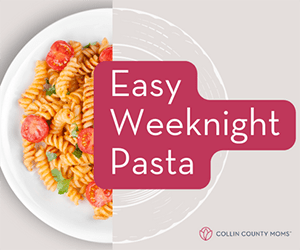Disclaimer :: Monkey Mouths Pediatric Therapy sponsored and wrote this article for the “Food Fights” editorial series. This post is part of an editorial series, “Food Fights,” brought to you by Fort Worth Moms. Follow the “Food Fights” event page for special giveaways, social engagement, and published articles. Join our subscriber list so you don’t miss a moment of “Food Fights” and all Fort Worth Moms has to offer throughout the year.
One of the best predictors of how well a child will eat is probably not what you’re thinking. It’s not whether you’ve offered their favorite foods or served everything in just the right way. It’s not with a TV or iPad, when they’re most hungry, or with the promise of the perfect reward. In fact, research shows the best predictor of good food intake is a calm psychological state leading up to mealtime.
As a mom of two myself, I hear you laughing that “calm” is probably not how you would describe those minutes leading up to mealtime.
Instead of dreaming for this phase to end, there are ways to make mealtimes pleasant and enjoyable for the whole family starting right now. Let me share a few general tips on how to de-stress mealtimes at home.
Give a Five-Minute Warning
Everyone appreciates a heads up on what happens next. Set your timer or give your child the task of telling Siri or Alexa to set a five-minute timer. Enjoy listening to that last song, put last condiments out on the table, and wash hands.
Ditch the Barstools
As convenient as it might seem to eat at the kitchen island, it oftentimes turns into a restaurant bar where the parent works tirelessly to cook, chop, fetch foods, grab more drinks, and whatever else everyone needs. Barstools also offer little-to-no postural stability for most children, all of whom need foot support. Try sitting at the table with high chairs, boosters, or makeshift Amazon boxes to provide an upright 90 degree sitting position. When our bodies are stable from a gross motor perspective, our mouths can better focus on the fine motor skill of eating.
Make Food Prep a Fun Activity
Stirring, measuring, grabbing ingredients, and online grocery shopping are all COVID-approved ways of involving children in the food prep process. Helping prepare food gives a child ownership, interest, and a positive shared experience with foods and you as a foundation for mealtime.
 Brainstorm Outlets for Control and Decision Making
Brainstorm Outlets for Control and Decision Making
Feeding is personal, invasive, and, as a child, oftentimes it can seem like it is thrust upon him or her. If mealtime is a battle for control, take a step back and assess whether this need of having control and autonomy is being met at mealtime, and in other areas of their life. Add opportunities for decision making such as choosing the plates, condiment options, specific chair, or an activity after dinner.
Check that Praise Does Not Come Across as Pressure
Phrases like “you can do it; I know you like this; you ate this yesterday” can come across as pressure and discourage the reluctant eater. Keep praises light hearted and specific to what your child did well: I am proud of you for sitting a different chair today. Thank you for helping me stir. You described the foods we’re having so well.
Approach Food Conflict like a Puzzle to Solve Together
We solve small problems with our food all the time without thinking about it. We add more salt, we let it cool off, cut it into smaller bites . . . all without having to stop and think through the process of identifying the problem, thinking through an inventory of solutions, choosing the right one, executing the strategy, and finally consuming the food in this new way. That process is not automatic or learned for most children. Offer suggestions on how to solve problems with food:
- It’s too big? Let’s make it smaller.
- It’s too sour? Let’s add sugar.
- It’s just too much today? Let’s take five deep breaths together.
De-Stress the Plate
Present a plate with two to four separate foods in small portion sizes, each with its own area of the plate. When children are presented with less food on their plates, it allows them to feel successful at eating their portion and even the opportunity to ask for more!
 Literally Minimize Meat
Literally Minimize Meat
Oftentimes I see parents offering the same sized bites of meat as a soft cheese or strawberry. Meat requires a lot more muscular strength and coordination to chew, and can set a child up to be unsuccessful and even refuse meats or chewy foods. Use your pinky nail finger or a black bean as a guide to dice grilled chicken, steak, lunch meat, etc. into very small bites.
Food Is Multicolor, Never Black and White
We have a rule in my therapy room and at my house: No one is allowed to say they don’t like something. Instead, we say: I’m still learning about . . . cauliflower . . . salmon . . . blueberries. Once a child says he or she doesn’t like something that is usually it. End of discussion. Black and white. Like and don’t like. Instead of sorting foods into these black and white categories, ask about the properties of the food itself. Was it sweet or salty? What does it look like? Can we think of another food it looks like?
Know When to Ask for Help
Food preferences and some degree of pickiness is normal for everyone. But when mealtimes and food preferences dictate choices for the whole family, compromise nutrition, seems difficult due to motor or medical issues, or is consistently stressful, know that there is an experienced team of feeding therapists at Monkey Mouths Pediatric Therapy right here in Fort Worth who can help.
 Mary Brezik, M.S., CCC-SLP is Monkey Mouths’ lead feeding therapist. Monkey Mouths is the premier pediatric speech pathology, occupational therapy, and feeding therapy provider in the Dallas Fort Worth area. With more than 16 years serving the community, Monkey Mouths has grown from a small practice to four locations, all while maintaining its signature level of care and commitment to improving the lives of its patients and families.
Mary Brezik, M.S., CCC-SLP is Monkey Mouths’ lead feeding therapist. Monkey Mouths is the premier pediatric speech pathology, occupational therapy, and feeding therapy provider in the Dallas Fort Worth area. With more than 16 years serving the community, Monkey Mouths has grown from a small practice to four locations, all while maintaining its signature level of care and commitment to improving the lives of its patients and families.













